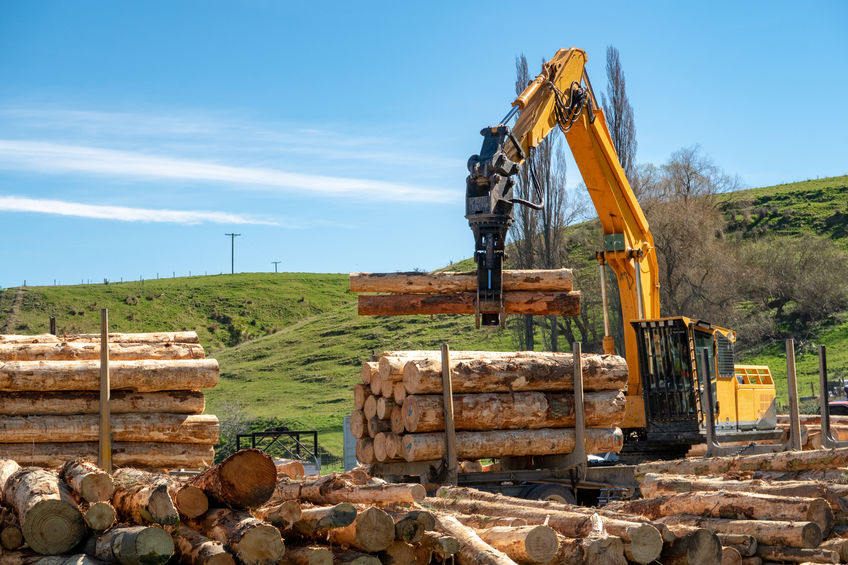Renewable energy from wind, solar and woodchips may one day make financial, practical and earthly sense, and enable the world to rely less on fossil fuels.
But not today, and likely not ever, according to Michael Moore’s new documentary film, Planet of the Humans, which flays renewable energy as doing more harm to the planet than good.
Mr. Moore is the film’s Executive Producer, and it is directed and narrated by the effective soft-spokeness of Jeff Gibbs. CFACT discussed this film last weekend, where it can be viewed for free on YouTube.
Early in the film the questions are asked, “[A]re we desperate to accept any idea that sounds ‘alternative’ or ‘green’? Are we avoiding looking too closely [at renewables] because we don’t want to know the answer?”
This documentary provides many such answers.
The film punctures numerous claims by the green movement, particularly the Sierra Club, about the efficacy of renewable energy, in particular the claim these sources “replace” fossil fuels. They do not, and cannot. Rather, energy from wind, solar and woodchips (i.e., biomass) are themselves the product of fossil fuels and are sustained by them.
CFACT has long exposed suspect renewable energy, be it from solar panels, wind turbines or in electric cars, which requires extensive mining of rare elements, takeover of vast land space, and continuous fossil fuel support.
Solar panels are described as inefficient and counterproductive; for example, they are shown on a lot the size of a football field in Lansing, Michigan but produce only 64,000 kilowatt hours per year. This is enough to service ten homes annually when it’s not cloudy or nighttime, in which case batteries or the electric grid kicks in to keep the lights on. An area of 15 square miles of solar panels would be required to service the entire city.
The massive Ivanpah Solar Array in the Mojave Desert in California, which covers 5.4 square miles, also comes under scrutiny. It still requires natural gas and took “an incredible amount of energy to mine and process the materials” used to construct it – more than the renewable energy derived. Over 30 such materials are listed, including familiar (coal, silicon, hydrofluoric acid) and less familiar (praseodymium, dysprosium). Compare this to the just-closed Indian Point nuclear plant in New York, which covers one half square mile and produced ten times the gigawatt hours of carbon-free power as Ivanpah
Wind energy is given a similar takedown in the film. A “mountaintop removal” of trees in Vermont’s Green Mountain Forest is described to make way for construction of 21 wind turbines. A single turbine requires 140 tons of steel, plus 36,000 pounds of fiberglass and basalt for each blade. Securing a turbine requires 800 cubic yards of concrete, which I found necessitates at least 60 truckloads to transport.
Fossil fuels are necessary to produce and install wind turbines and essential to sustain them when the wind stops blowing. A fossil-fueled power plant must idle 100 percent of the time to provide back-up power for the turbines in lieu of having to use more power to cycle up or down.
Then there is “biomass” energy from woodchips derived from grinding trees. The film shows fossil fuel-powered heavy equipment wiping out forests, juxtaposed with university officials touting their green bona fides by installing biomass energy on campus.
The film attacks the credibility of green leaders, including Michael Bloomberg, Robert F. Kennedy, Jr. and Michael Brune, Executive Director of the Sierra Club, who sell the falsehood that renewables replace fossil fuel. Activist Bill McKibben, co-founder of the group “350,” refuses to acknowledge biomass energy comes from denuding forests. Apple, Google and Telsa corporations are exposed for bogus claims of operating on “100 percent” renewable energy.
Al Gore especially gets thrashed as a hypocritical fraud, enriching himself from the sale of his television network to Al-Jezeera, which is financed by the oil kingdom of Qatar, and from his bio-fuel investments. Gore feigns ignorance and concern about harm to indigenous people in the Amazon River basin who were forced from their native land to make way for deforestation to produce ethanol from sugar cane.
The film is no friend of capitalism, which it reveals is the metaphorical fuel behind these renewable energy projects, as green groups are shown to be surreptitiously in bed with large “profiteering” corporations. However, it only touches on the reality that corporations respond to government incentives that push green policies.
In the end, the documentary claims the Earth is in danger from too many people consuming too many resources. Neither fossil fuels nor “green” renewable energy will resolve the issue. However, this dubious conclusion that there must be fewer people to consume less opens a whole additional debate; and does not detract from film’s substance on renewables.
